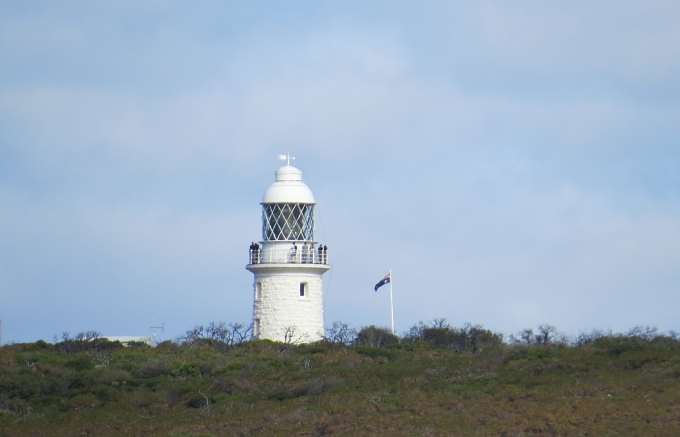The Iconic Busselton Jetty
/We made the grueling 11 nm passage from Quindalup to Busselton without incident, bruises or any broken equipment (that we know of). It was easy to tell when we arrived. Busselton has the longest timber-piled (wooden) jetty in the southern hemisphere, extending over a mile out into Geographe Bay. We were just over a mile from shore and would have run right into it if we hadn't dropped the anchor when we did.
We headed into town around Noon and beached the dink on the foreshore sand. This anchorage is close to everything in town which is quite convenient. We headed first to the Visitor Info Center to get a town map. I was momentarily distracted when we heard quite a ruckus emanating from a huge, spreading gum tree which turned out to be the squawking of a large number of little corellas.
The Visitor's Center is housed in a lighthouse tower right at the entrance to the jetty. We got our map and paid $2/ea to climb the stairs of the tower to the observation deck at the top for great views of the jetty stretching out a mile into the Bay.
As is the Aussie way of shortening up words and city names, Busselton is called Busso. It always takes us awhile to catch on.
The jetty is definitely the highlight of Busselton, a city icon. Construction on the jetty began in 1853 and was originally designed for loading timber. Because the bay waters are so shallow, the jetty was continually extended until the 1960s when it reached its current length of 1841m/5990'. It also featured a rail line along its length that originally operated as part of the railway line into Busselton from nearby Bunbury. The track is still used to transport tourists from one end of the jetty to the other.
The last commercial ship visited the jetty in 1971 and it was finally closed to shipping in 1972. Once government maintenance of the jetty ceased, it predictably began to deteriorate. Wood borers, rot, several fires, Cycle Alby in 1978 and a major fire in 1999, took their toll. A not-for-profit organization raised public awareness and the funds to save the jetty. With local and national government participation, the jetty was restored. Walking on the jetty costs $2.50 for a day pass, but it seemed well worth the price since all the funds collected go into its maintenance and repair. Parts of the old jetty pilings remain beside the new jetty, a contrast between old and new.
It's still school holidays and the jetty was packed with people. Some fished. Some meandered along gazing and chatting. Some pushed baby strollers. Some parents worked at keeping their kids in check. Others blissfully ignored their kids altogether. When the train chugged by, it was hard work finding a place to walk.
Near the end of the jetty is an underwater observatory that descends by spiral staircase 8m/30' below the jetty to observe marine life. The small aquarium only accommodates 40 people at a time and the line was long. Reviews on Trip Advisor for the jetty were great, but for the aquarium only mediocre. At $29.50/pp, we thought it was a bit pricey and gave it a pass.
Despite the number of people, we enjoyed the long walk. There was a section with plaques in memory of local people who had died and been involved in some way with the jetty or considered the jetty a favorite place. There were interesting informational signs and several unique weather vanes along the way.
Best of all, of course, was the view looking back towards shore.























